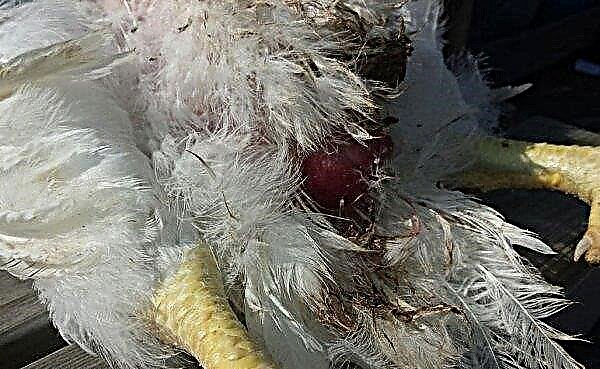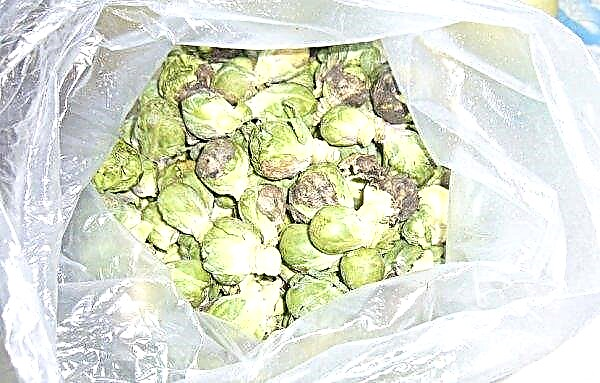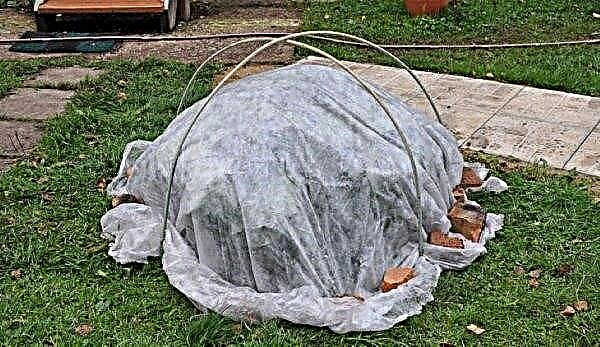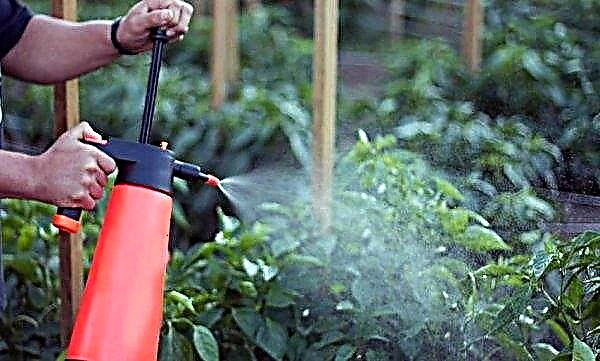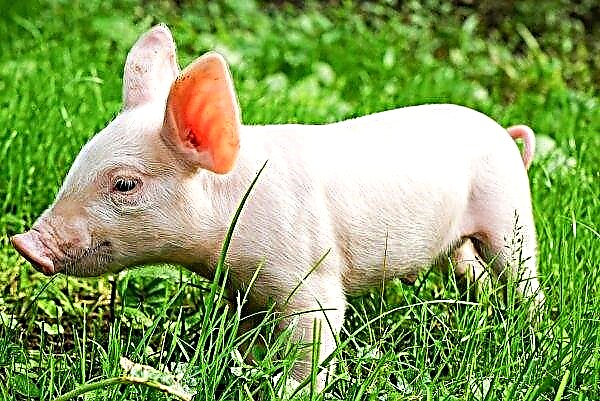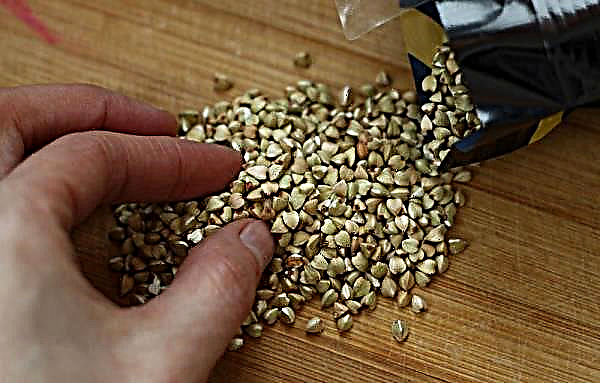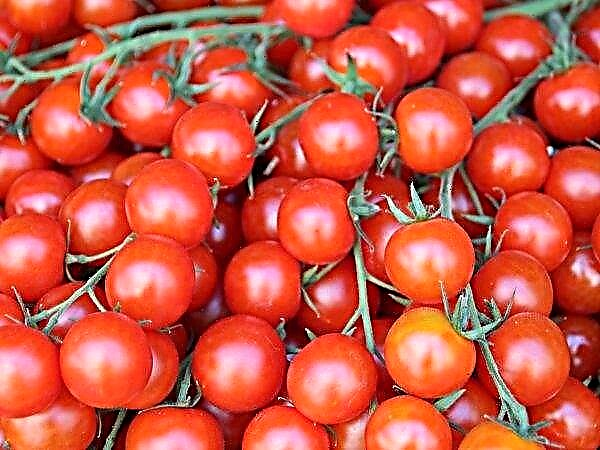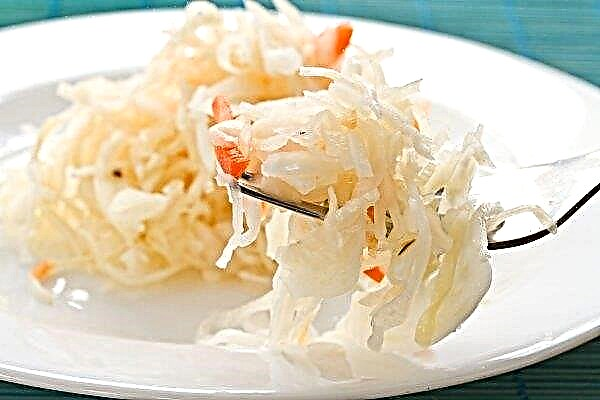The spider mite is an omnivorous pest that affects all vegetable crops. Solanaceae are a tidbit for him. Moreover, if a mite does not like potatoes, then on pepper it is a frequent visitor. Let's look at why this parasite appears on pepper seedlings, as well as how to deal with this enemy.
What does a pest look like?
There is an opinion that the spider mite is a harmful insect. In fact, this is a representative of arachnids. Peppers are attacked by representatives of the most common tick species - common (Tetranychus urticae).
It is impossible to examine this parasite with the naked eye. The length of the body of an adult tick is 0.4 mm. The color of Tetranychus urticae depends on the season and feed, so it can be yellowish-green, translucent, terracotta or brown. The body of the tick is oval, flat below, and convex above.Important! Tetranychus urticae lives on all continents, with the exception of Antarctica. It can also be called cosmopolitan.

Tetranychus urticae - sucking arachnids. With their piercing organs, they damage the lower outer layer of the leaf plate and simply drink the juice of the plant.
The parasite spreads in several ways:
- females migrate on the web;
- crawl to a nearby bush;
- through clothing, the skin of an animal, an instrument (the so-called "rider's method").
Having found refuge in a new bush, the female begins to actively saturate and produce cobwebs. Under it, as in a cocoon, she lays eggs from which, under suitable conditions, nymphs develop. Mites become sexually mature rapidly - in 20–25 days. It is easy to calculate that over a season more than 20 generations of pests can grow.
The role of the web in the life of Tetranychus urticae is great. She talks about the border of the settlement and creates a favorable microclimate for the development of larvae. Also, the web is a shelter from wind and rain. At high density, this cover can protect pests even from chemical tools.
Only eggs and females are sent for wintering (diapause). During this period they do not eat. Diapause occurs with a decrease in daylight hours and a drop in temperature. Parasites hibernate in the cortical layers of plants, wooden structures, soil, fallen leaves, plant waste.
Tetranychus urticae easily adapts to the surroundings. He lives freely both in greenhouses and in the open air.
Did you know? The first records of pepper discovered by scientists were made in India more than 3 thousand years ago. Today, this region is recognized as the birthplace of pepper.
What is dangerous
First of all, spider mites lead to disturbances in the metabolic processes of the plant.
Pest attacks are accompanied by such negative consequences:
- weakening of seedlings due to moisture deficit (a tick sucks out all the nutrients from the bush);
- the web interferes with the process of photosynthesis;
- the plant's immunity weakens, as a result, it is susceptible to various infectious diseases;
- mite-affected peppers are susceptible to mosaic and mycoplasma.

As a result, the activity of the pest has a detrimental effect on the bush and can destroy the entire crop, so the tick should be combated immediately. The sooner the struggle begins, the better the prospects.
Causes and signs of damage
The presence of a parasite on a plant can be found by the following signs:
- the presence of small whitish specks on the underside of the leaves;
- a white web appears on the green part, which surrounds the plant;
- foliage turns white from multiple injuries;
- the greens are completely covered with cobwebs, and a moving mass is noticeable at the edges of the leaves.
Did you know? The familiar black pepper is the fruit of a winding shrub that grows in East India and Indonesia.
There are several growth factors for Tetranychus urticae colonies:
- Too high temperature. Ticks are activated at + 16 ... + 20 ° C. As soon as the temperature rises, their activity rises. Critical is + 25 ° C and above.
- Lack of moisture. Ticks love dry air. Acceptable humidity for their reproduction is 40–50%.
- Water stress pepper. With moisture deficiency, soluble organic matter accumulates in the tissues of the bushes, which increase the fertility of the pests.
- An excess of nitrogen. A overfed plant attracts parasites, since nitrogen has a positive effect on the weight of females and the intensity of oviposition.

Ticks are particularly energetic in greenhouses, because the conditions are suitable for them.
What to do, what to process pepper
The fight against Tetranychus urticae is not an easy task, since many drugs that have a detrimental effect on other harmful insects are relatively ineffective against ticks. These pests are enviable viability and adaptation. But still there are methods to get rid of the parasite.
Important! If a pest is detected, peppers are sprayed with special preparations with a frequency of once every 10-14 days. If a massive lesion occurs, spraying is carried out more often.
Chemicals
The most common way to deal with ticks is with chemicals. The most effective of them are presented in the table.
| A drug | Act | Tick death period |
| Akarin | Immobilizes the parasite during the first 8 hours. As a result, the tick dies, because it is not able to eat. It is dangerous for bees. | 2-6 days |
| Actellik | A non-systemic insectoacaricidal drug that neutralizes a number of pests. It acts by contact-intestinal method. It is dangerous for bees. | 3 days |
| Apollo | Targeted binder acaricide. Deprives the ability to produce offspring of adult parasites, destroys eggs. | 5-7 days |
| “Dicofol, 20%” | Low-toxic intestinal substance. It acts on pests of all phases of development. | 5 days |
| "Tick-borne" | Intestinal insectoacaricide. Paralyzes the pest, as a result, it can not eat. Fatal to bees. | 3-4 days |
| Sunmight | Contact drug that affects the enemy at all stages of development. It takes effect in a few minutes and remains active for 1–1.5 months | 2-6 days |
Also popular in combating ticks are Agravertin, Antiklesh, Bitoksibacillin, Borneo, Vertimek, Oberon, Omayt, Neoron, Nissoran, Demitan, Talstar , Flumayt, Fufanon, Fitoverm.
Important! Some drugs (for example, Sunmight) can not be used more often than once a season.
Folk remedies
Many gardeners try not to use chemicals and prefer folk methods. Such preparations are especially relevant at a time when the fruits have already begun to set and ripen. It is unsafe to use chemical tools in this case.

If a web has formed on peppers in a greenhouse or outdoors, do not cut off to the store, how to deal with the enemy will tell folk recipes:
- Infusion of potato tops. 1.5 kg of finely chopped greens are poured with a bucket of water and insisted for 2-3 hours. Then the composition is filtered and sprayed on the green part of the peppers. After 2–4 hours, ticks die.
- Tops of tomatoes. 400 g of chopped greens are poured into a bucket of water and cooked over low heat for 30 minutes. After the solution is divided into several parts of 2 liters. 30 g of laundry soap is added to each serving. This tool helps in the fight not only with the tick, but also with aphids and other parasites.
- Onion peel. ½ bucket of husk is mixed with a bucket of hot (but not boiling water) water and insisted day. Then it is filtered twice and diluted with water.
- Hogweed. It is considered a dangerous weed plant. Weed is collected before flowering or after, dried and insisted on water for several days. All parts of the hogweed are involved. Proportions: 1 kg of raw materials per 10 liters of water.
- Calendula and marigolds. In combination with laundry soap they are an effective remedy against ticks. A glass of dried flowers is poured with 2 liters of boiling water. After the broth has cooled, it is diluted with water (2 l) and 40-50 g of laundry soap are added. It is possible to process plants after the soap has dissolved.
- Garlic. A few cloves are crushed and filled with water (3 tablespoons of raw materials per 0.5 l of water). The mixture is infused for 7-10 days.
- Yarrow. Effective if the lesion has not become widespread. 1 kg of the crushed plant (stems and inflorescences) is poured with a bucket of water and boiled over low heat for half an hour. Before use, the broth is filtered.
- Laundry soap. Pepper leaves are washed with its solution, focusing on damaged places. This method will not only reduce the number of pests, but also remove their protection - the web.
- Tobacco. 50 g of raw material is poured with a liter of boiling water and insisted for three days. Before use, the solution is filtered.
Important! Most folk methods cannot destroy the eggs of pests, so the manipulations are repeated.
When processing plants, it should be remembered that the web reliably protects pests by retaining any kind of liquid, so the places where there are many cobwebs are treated more carefully.
Agrotechnical methods
This type of struggle consists in carrying out various activities aimed at creating conditions unfavorable for the life and development of ticks. To achieve effectiveness, you should familiarize yourself with the preferences of the parasite.
Such techniques include:
- regular tillage;
- collection and disposal of plant debris;
- humidity increase;
- planting neighboring plants that drive away ticks (marigolds, garlic, marigolds, onions).
Preventative measures
It is not easy to deal with a spider mite, because its body quickly adapts to chemicals and even with regular treatments, parasites can restore their numbers. An increase in the dose of drugs, in turn, negatively affects the quality of the crop.
Did you know? Black pepper came to Europe about 600 years ago. Today this spice is present in every kitchen. At the same time, it was so valuable that it was used as a means of payment. Sometimes it was equal in value to gold.
The optimal solution is to carry out preventive measures to prevent the appearance and reproduction of the parasite:
- observe the temperature regime and maintain the humidity level;
- clean the site of plant debris;
- increase plant immunity;
- comply with crop rotation rules;
- disinfect greenhouses with sulfur blocks ("Pawn-C", etc.).


